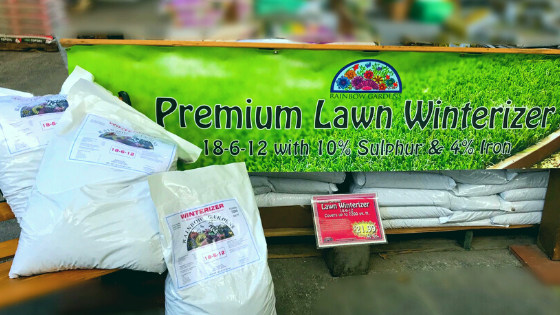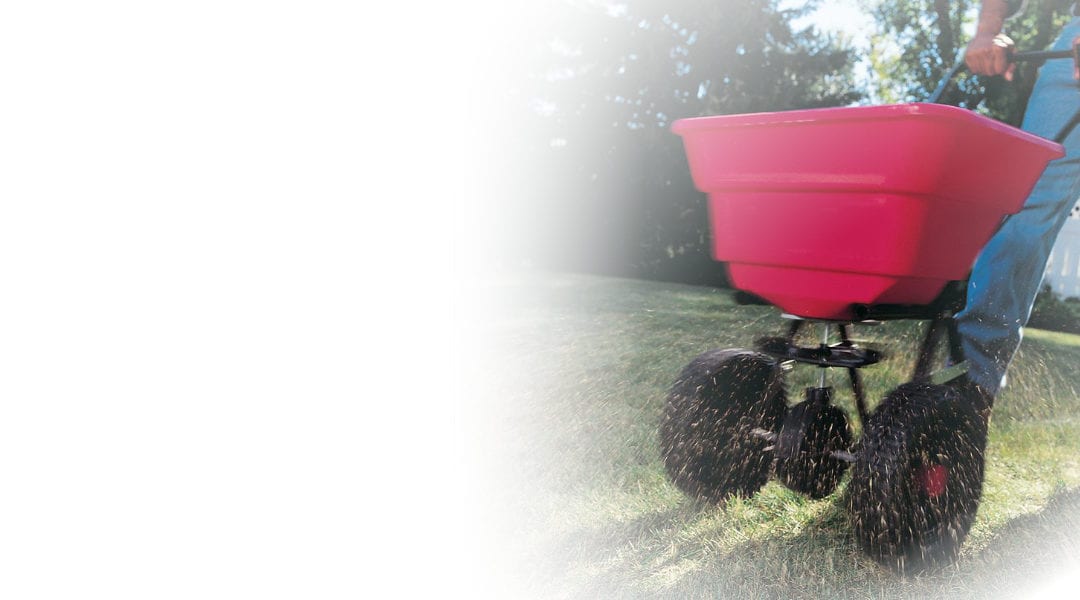With cooler temperatures rolling in, you should be making sure your fall lawn care plans are in place. A checklist like the following can help to make sure you have completed tasks that keep your lawn healthy all through fall, winter, and into spring. Take a look at some great tips we picked up from the Agrilife Water University zoom seminar held on Facebook in September. We concur with these tips and have modified a couple to be pertinent to San Antonio.
1. Apply Fall Weed Pre-Emergent late August to mid September: An important fall lawn care task is applying weed pre-emergent granules to prevent weeds from sprouting. Generally, the ideal time to put down your weed pre-emergent products is before Labor Day or after the first real good September rain (we had one already) and before a big cold front. You can read all about pre-emergents, how to apply them, and why they are an important lawn care task for fall here.
If you miss the date to apply weed pre-emergent, make sure to take the time to bag your grass when you mow so that you can remove as many of the weed seed heads that you can before your grass goes into dormancy. Post emergent weed killers are available, but they are very specific as to which types of turf they can be used on without causing damage, and they are not as effective as the pre-emergents for weed control.
(If this is the first time you are reading about pre-emergents, I’m sorry you haven’t seen all our notices, but it is late to be applying the product and we suggest subscribing to our newsletter so you get all the timely tips when you need them delivered directly to you.)
2. Turn Off Automatic Sprinkler Systems: The cooler temperatures in fall mean that warm weather turfgrass growth slows down. Combine that with more frequent fall September rains, and you just don’t need as much supplemental irrigation for your lawn. Turn off your automatic sprinkler systems to save money, water, and reduce disease in your turf.
3. Stop Watering Lawn at Night: Watering at night is not our first choice regardless, but it really isn’t good during fall. We tend to see an increase in lawn disease during the fall season due to cooler temperatures and an increase in rain. These elements result in reduced evapotranspiration (a fancy word meaning water loss from soil). When turf soil stays wet during cool temperatures, it invites diseases like brown patch (also known as large patch). Water only when needed during fall (once a month in lieu of rain) and keep it to the morning hours.

4. Apply Fall Fertilizer/Winterizer: Fall fertilization is really the most important fall garden task you can do for your lawn. Whether you decide to apply organic or synthetic fertilizer, applying it at the right time is important. Always read the label to avoid over-application. More is not better when it comes to fertilizer. Use just what you need.
- Apply Organic Fertilizer mid September. Organic lawn fertilizers/winterizers take longer for their ingredients to break down enough in order for the turf to be able to take up their nutrients. This is why organic fertilizer is applied earlier than synthetic fertilizer/winterizer. Maestro Gro Texas Tee, Medina Growin Green and Fertilome are all good organic lawn fertilizer choices.
- Apply Synthetic Fertilizer/Winterizer (Rainbow Gardens 18-6-12 winterizer formula) mid October – late October. The general rule of thumb is that the latest you should apply your fall fertilizer is about 6 weeks before our average first frost (with possible wiggle room). In San Antonio, our average first frost is around November 23rd, so this is why we urge you to apply your fertilizer mid October for best results.
Fall fertilizer/winterizer helps support a faster green up for your lawn come spring time. In the spring, your lawn will also start pulling nitrogen reserves from fall to help support the root system and to help your lawn recuperate from any stress it experienced the previous year (drought stress, etc..).
Any spring and summer fertilizing you do is piggybacking on the fall fertilization of your turf. The color and density of your spring lawn actually begins with fall fertilization. Experts say if you had to choose only one time you were going to fertilize your lawn, the fall season would be most important!
It’s important to note that applying nitrogen fertilizers too late in the year can stimulate too much above ground vegetative growth which can make your lawn more susceptible to winter damage. A late application of fertilizer and an early freeze can cause significant problems. This is one of the reasons we advise the final application be made 6 weeks before average first frost date.
5. Avoid Physical/Mechanical Injury to Lawn. Lawns will be going into dormancy pretty soon and it’s important that they have enough time to recover from any damage before that. Take care when mowing that you are not scalping your lawn at this time. Only remove 1/3 of the height of your turf each time you mow. Avoid any other extra stress or harsh chemicals at this time to give your lawn time to go into dormancy as healthy as possible.
An extra fall lawn care task you may want to tackle, whether to make adjustments for this year’s lawn care or to plan for next year’s care, is soil testing.
This is one of the best ways to know for certain what your lawn needs for health. Specific nutrients are only as helpful as the lawn is deficient in them, so why not find out exactly what nutrients your lawn need? Follow the Texas A&M Agrilife Extension advice in this link to properly obtain and send in soil samples.
Here’s to the best fall season yet!
~The Happy Gardener, Lisa Mulroy


I have a pi e tree my brother brought from. Kansas City, Kansas and its in the black trow away pots plants come in what do i do to save it? Its November and i live in san antonio texas i think if i plant it, it might die?
Hi Andrea,
Can you please verify what type of tree you are asking about? I don’t think it came across correctly in the email. For the most part, trees, shrubs, and woody perennials are great when they are planted in fall and winter in San Antonio. It’s the best time to plant them. However, if your tree is a tropical, you may need to bump it to a larger pot and plan on keeping it protected through winter. Please verify type of tree and we can go from there. If you meant pine tree, please verify what type of pine. And remember that often trees coming from different climates don’t necessarily thrive in Texas as they might somewhere else.
Good Morning,
We have a new lawn and have issued the time recommended to treat the lawn for the winter. Is there anything I can do to help my lawn or should I just wait for the spring?
Thank you for your time and advise.
Sincerely,
Anita Middleton
Hi Anita,
First of all, do you live in San Antonio? And how “new” is your lawn? If you live here in San Antonio, in general you can squeeze in an application of winterizer/fertilizer (18-6-12 formula). In general, you want to make sure it’s applied at least 3-6 weeks before a freeze, and I’m not sure when that first freeze will come. In spring, lawn care starts early (mid Feb) for weed pre-emergents, followed by fertilizer. You can follow our turf/lawn care calendar, here.